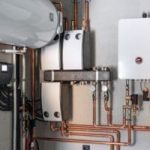
Most people are familiar with the Panama Canal, but they probably don’t know the first effort to build the Panama Canal, spanning almost a decade, was by France. Facing considerable initial naysaying and ridicule, Ferdinand de Lesseps had the acumen and drive to construct the Suez Canal. Success was realized after overcoming many obstacles and difficulties. Naturally enough, France turned to him to build a sea-level canal in Panama.
Minority technical reports evaluating the feasibility of a canal through the Panamanian isthmus concluded either artificial lakes, emulating what was already present in Nicaragua, or else a series of locks, were needed. A sea-level canal without locks was considered unrealistic due to the terrain of mostly rock, and massive mud avalanches at the Culebra excavation were common, as soil on sloping hard rock lost its grip when saturated with rains.
However, the winding Chagres River was the insurmountable challenge for a sea-level canal. It could not be diverted. Flooding that would impress Noah was not uncommon in the rainy season. Without even considering flood release, creating a dam was daunting because no rock foundation was found.
However, these minority reports were ignored or disparaged because Lesseps was entranced by the simplicity and speed of transport enabled by a sea-level canal. His vision, taken as a fait accompli, was endorsed almost unanimously.
He knew there would be problems in Panama, but problems also had been encountered at Suez. “Men of genius” had stepped up with timely solutions. Lesseps was convinced that work should proceed at once in Panama and when problems arose, then “men of genius” would figure out how to proceed. Success was thought inevitable.
In the end, France suffered the single largest peacetime project failure ever attempted by mankind. The poor and middle class were devastated when life savings were lost investing in the Compagnie Universelle du Canal Interoceanique de Panama. Liquidators finally shut down operations shortly after France suffered the Sedan military fiasco.
The French failure invokes similar questions about renewable energy sources like solar and wind. The financial attractiveness of solar and wind electrical generation is extremely low operational costs. The Achilles heel of renewables is the fully loaded cost required to deal with renewables’ intermittency.
In a first scenario, if no renewables were used for electrical generation, then the cost borne by customers would include the capital and operating costs for baseload (e.g., coal, nuclear), intermediate (e.g., combined-cycle gas turbines), and peaking (e.g., combustion turbines) generation.
A second scenario provides solar and wind generation into the grid. Because there is no storage solution available today for solar and wind for any significant length of time, at full base load, the true fully loaded cost to customers includes costs of the first scenario replacing renewables’ actual capacity plus costs of installed renewables. This summation is required because, without proper storage, capable backup is needed when solar and wind fail. Of course, solar output diminishes down to nothing depending upon cloudiness and is off approximately half the day (at night), and wind generation fails when the winds are either too high or too low, or there is winter icing.
Renewable energy shouldn’t be considered viable without storage (see here, here, here, here, here) capable of satisfying long term, full base load demand. “Energy storage would have to cost $10 to $20/kWh for a wind-solar mix with storage to be competitive with a nuclear power plant providing baseload electricity. And competing with a natural gas peaker plant would require energy storage costs to fall to $5/kWh … That’s an intimidating stretch for lithium-ion batteries, which dipped to $175/kWh in 2018.”
Renewable energy costs should include solar or wind farm capital, storage costs, grid distribution creation or enhancements, and fully loaded costs of the capital plant for grid balancing and firming (including frequency and voltage regulation maintaining grid stability) necessary to address intermittency problems should storage fall short or fail. “Large amounts of intermittent electricity create huge swings in supply which the grid has to be able to cope with” Fossil fuel and nuclear plants don’t have the same intrinsic problem with grid frequency. “Spinning turbines of thermal plants connected to the grid create kinetic energy called inertia which helps keep the network at the right frequency. This spinning can’t be created by wind turbines or solar panels and policy makers need to find ways to incentivize other forms of energy storage or flexible output.”
Renewables at fully loaded cost should have to compete economically against coal, gas turbines, nuclear, hydropower, and geothermal electrical generation without subsidies or grid penetration preferences. Consumers should know actual renewables production is significantly below nameplate capacity and they will pay for that.
The title of Rick Page’s book instructs, “Hope is not a strategy.” Heeding this, we shouldn’t be making any further significant expenditures on solar or wind generation until a multiday storage solution is proven and commercially available. Today, we are still looking for that “man of genius” providing such a technical and manufacturing solution. The experience of Lesseps being our guide, it is possible you can’t get to there from here.
It is possible there is no affordable technical solution. That being the case, our country needs real, not imaginary, solutions providing the massive amounts of energy our country requires for liberty and prosperity. Faith in renewables for reliable and economical energy generation is a symptom of Lesseps syndrome.
Likewise, there is a fantasy of converting all automobiles to electric vehicles (see here, here). Led by California, many states have mandated the demise of internal combustion engines. The attraction of EV’s is these are considered (erroneously) zero emission sources. EV’s are a strange beast having multiple Achilles heels including cold weather performance (see here, here), towing range and payload capacities, vehicle expense, vehicle reliability, resources limitations (see here, here, here, here), recharging (see here, here), and lithium ion battery fires (see here, here, here).
Conventional cars use 18–49 pounds of copper, while EV’s use 3–4 times more. Depending on vehicle size, total lifetime costs of an EV are thought to be at least 44–60 percent higher. Demand for copper for renewables and EV’s that must be produced by 2030 could be up many times requiring multitudes of new mines. Overcoming shortfalls (see here, here) will be difficult. Commodity prices could climb sharply with shortages.
Faith in electric vehicles as a reliable and economical means of transportation is a symptom of Lesseps syndrome, optimistic that “men of genius” will show up to solve intractable problems. Fully loaded costs of renewables and electric vehicles make ownership uneconomical with poor prospects of a turnaround. Going further down this path will adversely impact the poor and middle class disproportionately severely threatening manufacturing and national security.
Writer and philosopher George Santayana is attributed to write, “Those who cannot remember the past are condemned to repeat it.” This time, we should not commit to unreliability and financial disaster thinking “men of genius” will eventually show up to solve insurmountable problems. This time, solutions should precede execution. Let us hope we awaken from our hypnotic stupor over renewable energy and electric vehicles to understand how they suffer from Lesseps syndrome.





